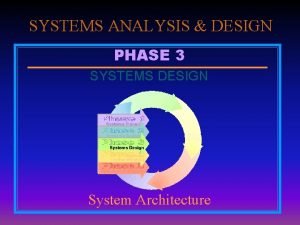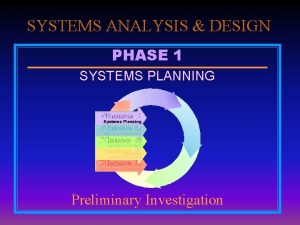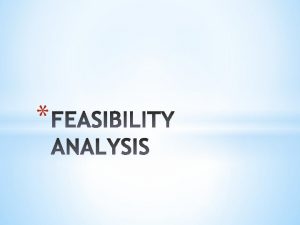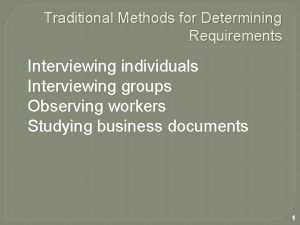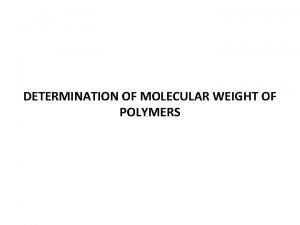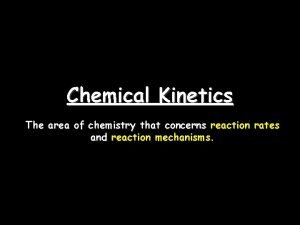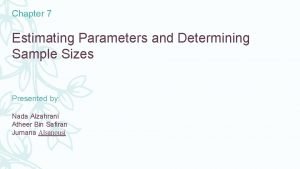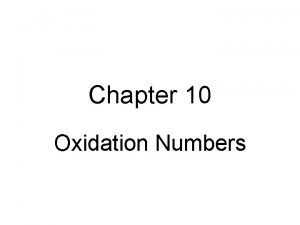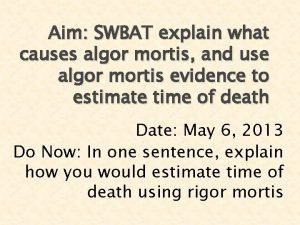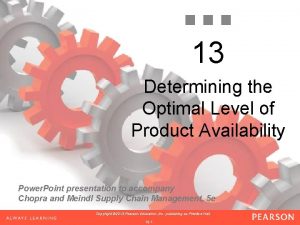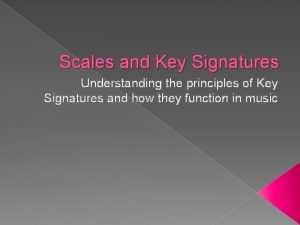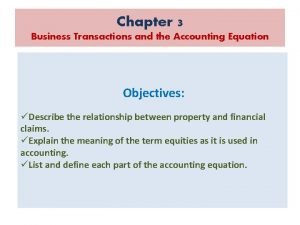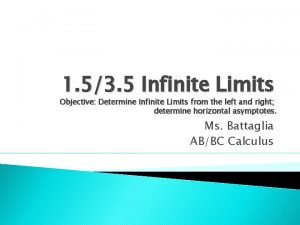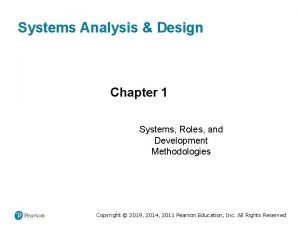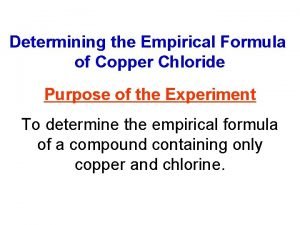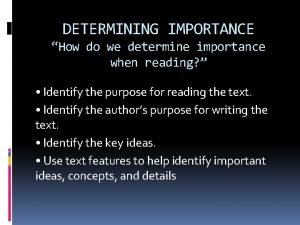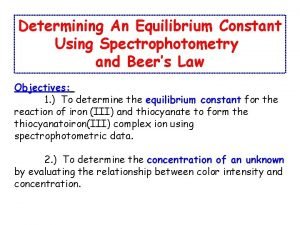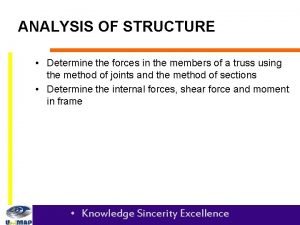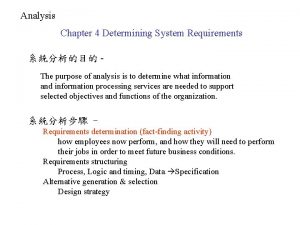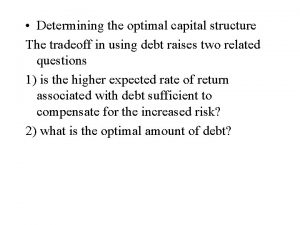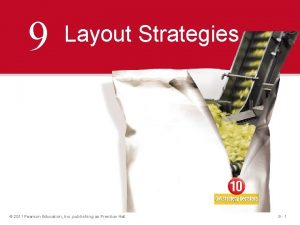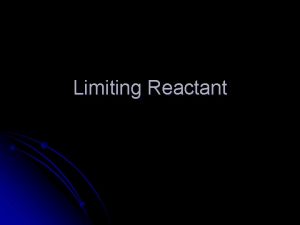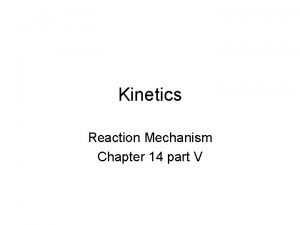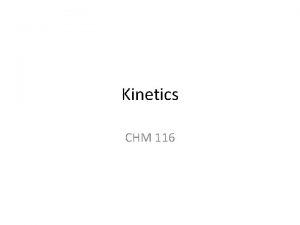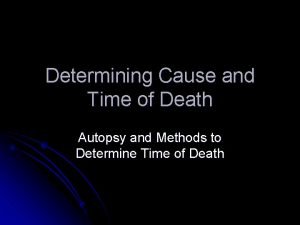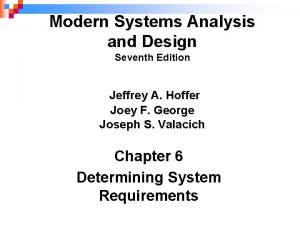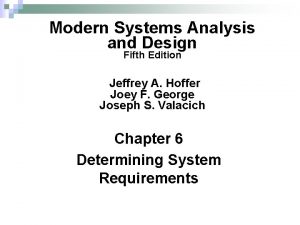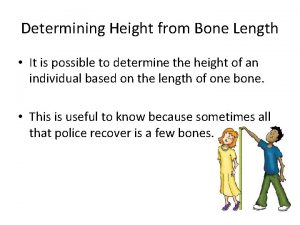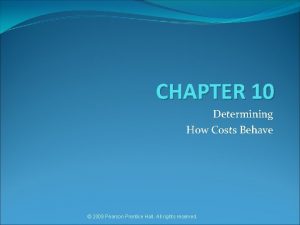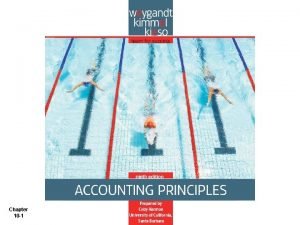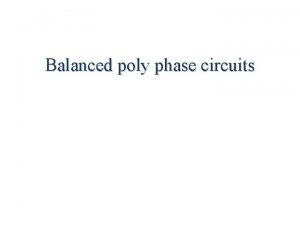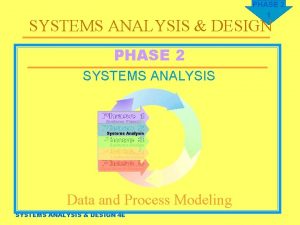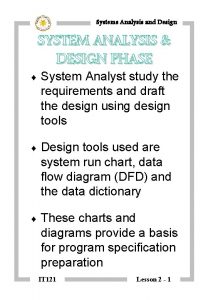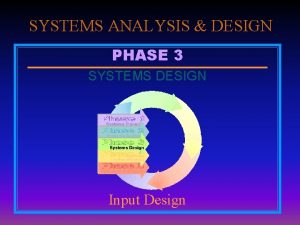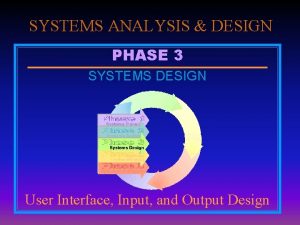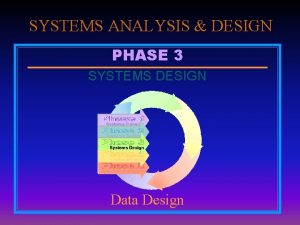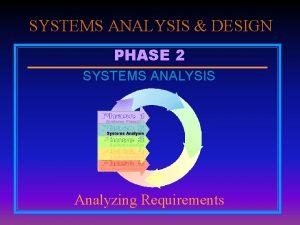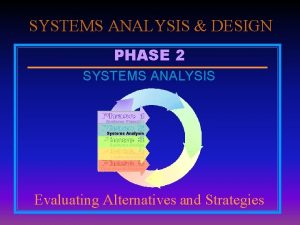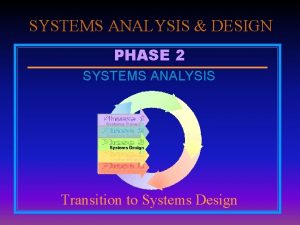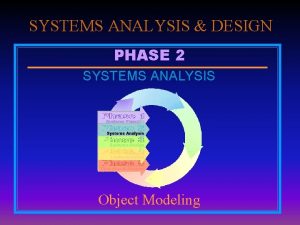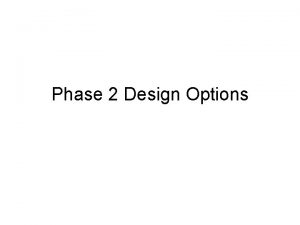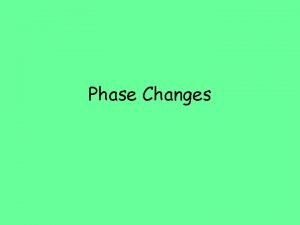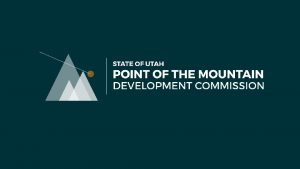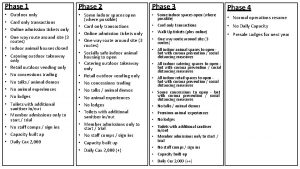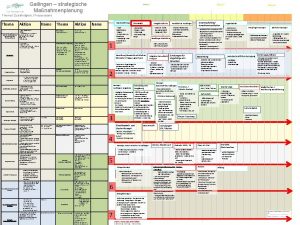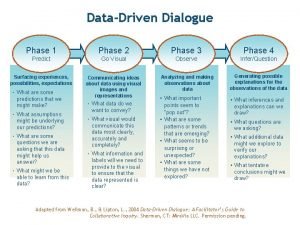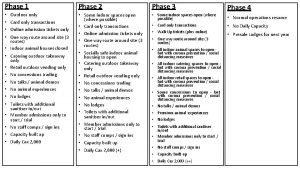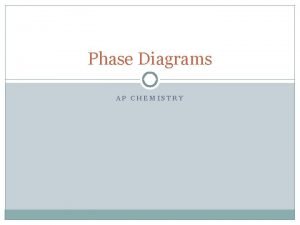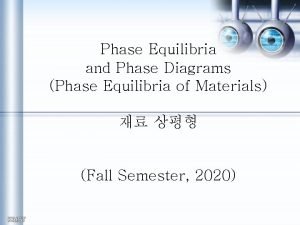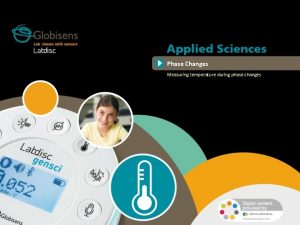SYSTEMS ANALYSIS DESIGN PHASE 2 SYSTEMS ANALYSIS Determining






















































- Slides: 54

SYSTEMS ANALYSIS & DESIGN PHASE 2 SYSTEMS ANALYSIS Determining Requirements

SDLC Phases PHASE 2 2 Phase 2: Systems Analysis Objectives à Learn how the current system works à Determine and document fully how the system could work better à Develop a logical model of the new system à Make recommendations to management SYSTEMS ANALYSIS & DESIGN 3 E

Chapter 3 Determining Requirements SYSTEMS ANALYSIS & DESIGN 3 E PHASE 2 3

Objectives PHASE 2 4 à Explain how systems analysis relates to business needs, problems, and opportunities à List and describe the types of system requirements that must be identified during systems analysis à Describe how to conduct a successful interview SYSTEMS ANALYSIS & DESIGN 3 E

Objectives PHASE 2 5 à Explain when and how to use fact-finding techniques, including interviews, documentation review, observation, questionnaires, sampling, and research à Set up effective documentation methods to use during systems development SYSTEMS ANALYSIS & DESIGN 3 E

Objectives PHASE 2 6 à Describe alternative systems development approaches, including joint application development (JAD) and rapid application development (RAD) à Explain object-oriented (O-O) systems development and how this approach differs from structured analysis and design SYSTEMS ANALYSIS & DESIGN 3 E

Introduction à Overview of systems analysis phase à Fact-finding techniques à Interviewing à Documentation review à Observation à Questionnaires à Sampling à Research à Methods used to record results SYSTEMS ANALYSIS & DESIGN 3 E PHASE 2 7

Overview of the Systems Analysis Phase PHASE 2 8 à Systems analysis phase tasks à Gather and record facts about the current system and what is required to support business needs à Three-step approach to decision-making à Determine the facts à Analyze the facts à Make a decision à Two steps in the systems analysis phase à Requirements determination (fact-finding) à Requirements analysis SYSTEMS ANALYSIS & DESIGN 3 E Click to see Figure 3 -1

The Challenge of Systems Analysis PHASE 2 9 à Large systems are especially challenging à Business systems must change rapidly à Systems analysts use various skills à Reverse engineering à Critical-thinking skills à Interpersonal skills SYSTEMS ANALYSIS & DESIGN 3 E

The Challenge of Systems Analysis à Requirements determination questions à Who does it? à What is done? à Where is it done? à When is it done à How is it done à Another important question à Why? SYSTEMS ANALYSIS & DESIGN 3 E Click to see Figure 3 -2 PHASE 2 10

The Challenge of Systems Analysis à Requirements analysis questions à Who should do it? à What should be done? à Where should it be done? à When should it be done? à How should it be done? SYSTEMS ANALYSIS & DESIGN 3 E PHASE 2 11

Systems Requirements PHASE 2 12 à Characteristics or features that must be included to satisfy business requirements à Outputs à Inputs à Processes à Timing à Controls à Volumes. sizes, and frequencies SYSTEMS ANALYSIS & DESIGN 3 E

Interviews à Determine the people to interview à Establish objectives for the interview à Prepare for the interview à Conduct the interview à Document the interview à Evaluate the interview à Unsuccessful interviews SYSTEMS ANALYSIS & DESIGN 3 E PHASE 2 13

PHASE 2 14 Interviews à Determine the people to interview à Select the right people à Consider informal structures SYSTEMS ANALYSIS & DESIGN 3 E Click to see Figure 3 -3

Interviews à Establish objectives for the interview à Determine the areas to be discussed à List the facts you want to gather à Solicit ideas, suggestions, and opinions à Keep questions consistent SYSTEMS ANALYSIS & DESIGN 3 E PHASE 2 15

PHASE 2 16 Interviews à Prepare for the interview à Schedule a specific day and time à Place a reminder call à Send a memo to managers SYSTEMS ANALYSIS & DESIGN 3 E Click to see Figure 3 -4

PHASE 2 17 Interviews à Prepare for the interview à Schedule a specific day and time à Place a reminder call à Send a memo to managers à Create a list of questions à Use a variety of questions à Open-ended questions à Closed-ended questions à Range of responses questions à Send confirmation memo to interviewee SYSTEMS ANALYSIS & DESIGN 3 E Click to see Figure 3 -5

Interviews PHASE 2 18 à Conduct the interview à Introduce yourself à Describe the project à Explain your objectives à Ask questions in order à Summarize the main points à Explain the next course of action à Listen carefully - practice engaged listening SYSTEMS ANALYSIS & DESIGN 3 E

TRADEOFF PHASE 2 19 à What is the best location for the interview? à Interviewee’s office à Makes the interviewee more comfortable à Easier access to supporting material à Neutral location à Fewer interruptions à Advise interviewee to bring necessary items SYSTEMS ANALYSIS & DESIGN 3 E

A KEY QUESTION PHASE 2 20 à Does organization level affect interviews? à At Fast. Pak, Jesse Evans runs into a problem à Calls and visitors cause many interruptions à Interview process is time-consuming à Manager unwilling to reschedule meeting à What should Jesse do in this situation? SYSTEMS ANALYSIS & DESIGN 3 E

Interviews PHASE 2 21 à Document the interview à Keep note-taking to a minimum à Record the information quickly à Allow time between interviews à Thank the interviewee with a memo à Note the date, time, location, and purpose à Review the main points discussed SYSTEMS ANALYSIS & DESIGN 3 E

Interviews PHASE 2 22 à Evaluate the interview à Identify possible biases à Determine whether interviewees have necessary experience SYSTEMS ANALYSIS & DESIGN 3 E

TRADEOFF PHASE 2 23 à Tape recorders: pros and cons à Can be an effective tool à If people feel threatened à Discuss in advance à Reassure the interviewee à Turn off tape when indicated à Must use this technique carefully à You might rely too much on the recorder à Extra time needed to listen to taped material SYSTEMS ANALYSIS & DESIGN 3 E

A KEY QUESTION PHASE 2 24 à Should an analyst interview several people at the same time? à Jesse’s problem in the Fast. Pak interview à One person dominated the conversation à Meeting with two interviewees created a problem, not an opportunity à What should Jesse have done? SYSTEMS ANALYSIS & DESIGN 3 E

Interviews PHASE 2 25 à Unsuccessful interviews à Not all interviews are successful à Find a way to conclude an unsuccessful meeting à Consider alternatives SYSTEMS ANALYSIS & DESIGN 3 E

Other Fact-Finding Techniques à Document review à Observation à Questionnaires à Sampling work and work products à Graphics à Research SYSTEMS ANALYSIS & DESIGN 3 E PHASE 2 26

Other Fact-Finding Techniques PHASE 2 27 à Document review à Review existing system documentation à Obtain copies of actual forms and documents à Review blank copies of forms à Review samples of completed forms à Review software documentation SYSTEMS ANALYSIS & DESIGN 3 E

Other Fact-Finding Techniques PHASE 2 28 à Observation à Ask questions about present system operation à Observe all steps in the processing cycle à Examine each form, record, and report à Consider each person working with the system à Talk to people who receive current reports à Consider the Hawthorne Effect SYSTEMS ANALYSIS & DESIGN 3 E Click to see Figure 3 -6

Other Fact-Finding Techniques PHASE 2 29 à Questionnaires à Brief and user-friendly à Clear instructions à Questions in logical order à Simple wording to avoid misunderstanding à Avoid leading questions à Open-ending questions are difficult to tabulate à Limit questions raising concern/negative issues à Section for general comments à Test the questionnaire in advance SYSTEMS ANALYSIS & DESIGN 3 E Click to see Figure 3 -7

Other Fact-Finding Techniques à Sampling work and work products à Collect examples of actual documents à Sampling techniques à Systematic sample à Stratified sample à Random sample SYSTEMS ANALYSIS & DESIGN 3 E PHASE 2 30

Other Fact-Finding Techniques PHASE 2 31 à Graphics à Display fact-finding results graphically à Graphical format can highlight quality control problems/causes à Histogram is common tool to display questionnaire or sampling results Click to see Figure 3 -8 SYSTEMS ANALYSIS & DESIGN 3 E Click to see Figure 3 -9

Other Fact-Finding Techniques PHASE 2 32 à Research à Journals, periodicals, books à Internet sites à Hardware and software vendors à Independent firms that provide information à Newsgroups à Professional meetings, seminars, discussions à Site visits to observe a system in use Click to see Figure 3 -10 a SYSTEMS ANALYSIS & DESIGN 3 E Click to see Figure 3 -10 b

TRADEOFF PHASE 2 33 à Interviews à Work best with small number of people à More personal and familiar than questionnaires à People talk more freely in person à Interviewers can react immediately à Participation can be a human relations plus à Costly and time-consuming SYSTEMS ANALYSIS & DESIGN 3 E

TRADEOFF PHASE 2 34 à Questionnaires à Work best with large groups à Many people have opportunity for input à More convenient for recipients à Anonymous responses might be more candid à Questions must be designed carefully à Some recipients view questionnaires as intrusive, time-consuming, and impersonal SYSTEMS ANALYSIS & DESIGN 3 E

A KEY QUESTION PHASE 2 35 à Conduct interviews or send questionnaires? à Cyberstuff background à Several thousand sales transactions per week à Three-shift operation à 50 full-time and 125 part-time employees à Ann’s objective: information to analyze and resolve recent billing complaint problems à What are pros and cons of each technique? à What is the best way to select participants? SYSTEMS ANALYSIS & DESIGN 3 E

Recording the Facts PHASE 2 36 à The need for recording the facts à Keeping accurate records is essential à Basic rule: write it down à Guidelines for good documentation à Record information as soon as possible à Use the simplest recording method à Ensure that your work is understandable à Organize your documentation material à Consider a narrative list with simple statements SYSTEMS ANALYSIS & DESIGN 3 E

Recording the Facts PHASE 2 37 à Software tools à Word processing à Spreadsheets à Database à Presentation graphics à Personal or desktop information managers SYSTEMS ANALYSIS & DESIGN 3 E

Other Systems Development Techniques PHASE 2 38 à Introduction à Structured analysis and design is the most common method à Other techniques are available à Joint application development (JAD) à Rapid application development (RAD) à Object-oriented (O-O) systems development SYSTEMS ANALYSIS & DESIGN 3 E

Other Systems Development Techniques PHASE 2 39 à Joint application development (JAD) à Task force of users, managers, and IS staff à Objectives à Gather information à Discuss business needs à Define the new system requirements à Methods à Team usually meets at specific location à Team has project leader and recorder(s) à Key users participate in intense development effort à JAD can be costly, but highly effective SYSTEMS ANALYSIS & DESIGN 3 E Click to see Figure 3 -11

Other Systems Development Techniques PHASE 2 40 à Rapid application development (RAD) à Team method similar to JAD, but goes further à RAD phases resemble a mini-SDLC à Requirements planning, user design, construction, and cutover à RAD involves a continuous design process à Team can react quickly à Final objective is a functioning system à RAD can be faster and less costly, but stresses system mechanics rather than strategic needs SYSTEMS ANALYSIS & DESIGN 3 E

Other Systems Development Techniques PHASE 2 41 à Object-oriented (O-O) systems development à Object-based model à Objects and their attributes are abstract entities à Classes and subclasses SYSTEMS ANALYSIS & DESIGN 3 E

PHASE 2 42 Preview of Requirements Analysis Phase à Requirements analysis is the second major stage of the systems analysis phase à Requirements analysis objectives à Develop a logical design of the system à Create a system requirements document à Deliver a formal presentation to management SYSTEMS ANALYSIS & DESIGN 3 E

SOFTWEAR, LIMITED PHASE 2 43 à SWL has completed a preliminary investigation à Several problems were revealed à Input errors à Overtime to correct errors and produce reports à The IS team recommended further analysis à Mr. Jeremy approved the recommendation à The systems analysis phase now is underway SYSTEMS ANALYSIS & DESIGN 3 E

PHASE 2 44 SOFTWEAR, LIMITED à Human resources department interview à Review of organization charts Click to see Figure 3 -12 SYSTEMS ANALYSIS & DESIGN 3 E Click to see Figure 3 -13

PHASE 2 45 SOFTWEAR, LIMITED à Human resources department interview à Review of organization charts à Interview with Meredith Rider à Preparation Click to see Figure 3 -14 SYSTEMS ANALYSIS & DESIGN 3 E Click to see Figure 3 -15

PHASE 2 46 SOFTWEAR, LIMITED à Human resources department interview à Review of organization charts à Interview with Meredith Rider à Preparation à Forms Click to see Figure 3 -16 Click to see Figure 3 -18 Click to see Figure 3 -17 Click to see Figure 3 -19 SYSTEMS ANALYSIS & DESIGN 3 E Click to see Figure 3 -20

PHASE 2 47 SOFTWEAR, LIMITED à Human resources department interview à Review of organization charts à Interview with Meredith Rider à Preparation à Forms à Explanatory memo to Mike Feiner à Confirmation memo to Meredith à Follow-up memo to Meredith after interview Click to see Figure 3 -21 SYSTEMS ANALYSIS & DESIGN 3 E Click to see Figure 3 -22

PHASE 2 48 SOFTWEAR, LIMITED à Payroll department interview à Interview with Nelson White, lead payroll clerk à Review of SWL’s Systems and Procedures Manual SYSTEMS ANALYSIS & DESIGN 3 E Click to see Figure 3 -23

PHASE 2 49 SOFTWEAR, LIMITED à Payroll department interview à Interview with Nelson White, lead payroll clerk à Review of SWL’s Systems and Procedures Manual à Review of sample payroll deduction registers SYSTEMS ANALYSIS & DESIGN 3 E Click to see Figure 3 -24

SOFTWEAR, LIMITED PHASE 2 50 à Business information services interview à Interview with Linda De. Marco, customer relations manager for BIS à New program called CHIPS à Determination that CHIPS will not handle SWL’s needs SYSTEMS ANALYSIS & DESIGN 3 E

SOFTWEAR, LIMITED PHASE 2 51 à New plans and developments à Upcoming changes at BIS present problems à No obvious solution to stock purchase deduction processing à Limited results expected unless the payroll project scope is expanded à Announcement that SWL will move forward with new Employee Savings and Investment Plan (ESIP) à ESIP target date of April 1, 1999 SYSTEMS ANALYSIS & DESIGN 3 E

SOFTWEAR, LIMITED PHASE 2 52 à The revised project à Objective: to determine requirements for the overall payroll system à Carla Moore to work with Rick Williams à Conduct additional interviews and follow-up interviews à Review of payroll report samples à Payroll Register SYSTEMS ANALYSIS & DESIGN 3 E Click to see Figure 3 -25

SOFTWEAR, LIMITED PHASE 2 53 à The revised project à Objective: to determine requirements for the overall payroll system à Carla Moore to work with Rick Williams à Conduct additional interviews and follow-up interviews à Review of payroll report samples à Payroll Register à Employee Compensation Record SYSTEMS ANALYSIS & DESIGN 3 E Click to see Figure 3 -26

SOFTWEAR, LIMITED PHASE 2 54 à The revised project à Objective: to determine requirements for the overall payroll system à Carla Moore to work with Rick Williams à Conduct additional interviews and follow-up interviews à Review of payroll report samples à Payroll Register à Employee Compensation Record à SWL employee paycheck and stub SYSTEMS ANALYSIS & DESIGN 3 E Click to see Figure 3 -27
 This is the final task in phase 3: systems design
This is the final task in phase 3: systems design Output of design phase
Output of design phase This is the final task in phase 3: systems design.
This is the final task in phase 3: systems design. This is the final task in phase 3 systems design
This is the final task in phase 3 systems design Financial feasibility in entrepreneurship
Financial feasibility in entrepreneurship Normal phase vs reverse phase chromatography
Normal phase vs reverse phase chromatography Tswett pronunciation
Tswett pronunciation Mobile phase and stationary phase
Mobile phase and stationary phase Stationary phase and mobile phase in hplc
Stationary phase and mobile phase in hplc Normal phase vs reverse phase chromatography
Normal phase vs reverse phase chromatography Line current and phase current
Line current and phase current Detectors used in hplc
Detectors used in hplc Phase to phase voltage
Phase to phase voltage Broad phase vs narrow phase
Broad phase vs narrow phase How can ngt be used for requirements determination?
How can ngt be used for requirements determination? Determining the arrival times between p-wave and s-wave
Determining the arrival times between p-wave and s-wave Methods for determining molecular weight of polymers
Methods for determining molecular weight of polymers How to determine the rate determining step
How to determine the rate determining step Common critical values
Common critical values Margin of safety ratio formula
Margin of safety ratio formula Oxidation number rules
Oxidation number rules What causes algor mortis?
What causes algor mortis? What is optimal level of product availability
What is optimal level of product availability Kendall kendall
Kendall kendall Determining key signature
Determining key signature Attackable electrodes
Attackable electrodes Chardakov method
Chardakov method Problem 3-1 balancing the accounting equation
Problem 3-1 balancing the accounting equation Rules for limits to infinity
Rules for limits to infinity Determining human information requirements
Determining human information requirements Teacher twins 2015 answer key
Teacher twins 2015 answer key Copper chloride formula
Copper chloride formula Determining importance
Determining importance Lambert's law
Lambert's law Identify zero force members in the truss
Identify zero force members in the truss Determining system requirements
Determining system requirements Absolute advantage
Absolute advantage Determining optimal capital structure
Determining optimal capital structure Hard customer defined standards
Hard customer defined standards Determining ionization energy
Determining ionization energy A good layout requires determining
A good layout requires determining Type of claim that leads to action
Type of claim that leads to action Determining customer needs
Determining customer needs Determining molecular polarity
Determining molecular polarity How to calculate limiting reactant
How to calculate limiting reactant Rate determining step
Rate determining step Rate determining step
Rate determining step Methods for determining time of death
Methods for determining time of death Contemporary methods for determining system requirements
Contemporary methods for determining system requirements How can ngt be used for requirements determination
How can ngt be used for requirements determination An anthropologist finds a 29-cm humerus
An anthropologist finds a 29-cm humerus Determining how costs behave
Determining how costs behave Ordinary repairs
Ordinary repairs Solved: xco 100 pts question 8 a wye-wye four-wire system
Solved: xco 100 pts question 8 a wye-wye four-wire system Ltorg in system programming
Ltorg in system programming
